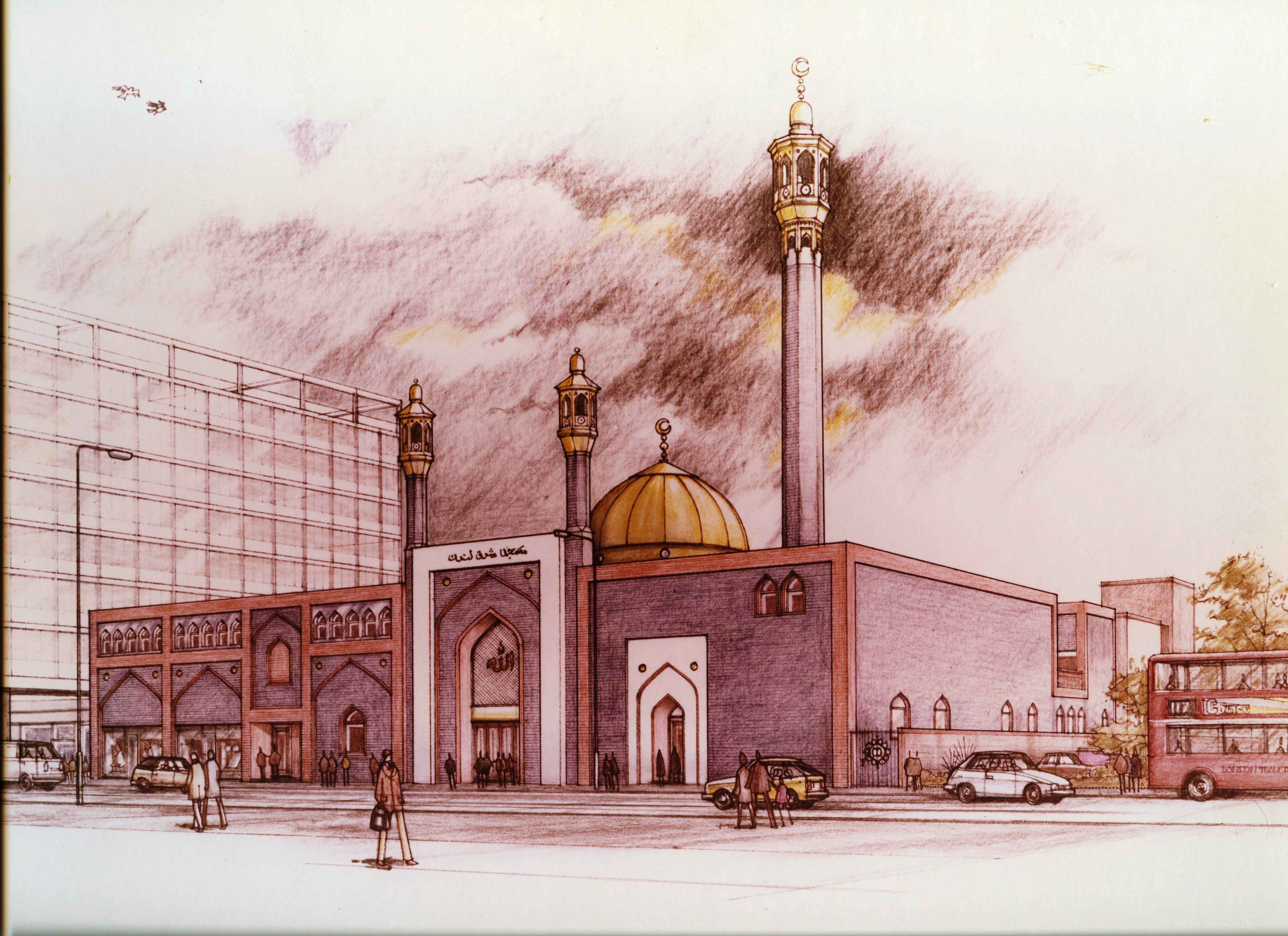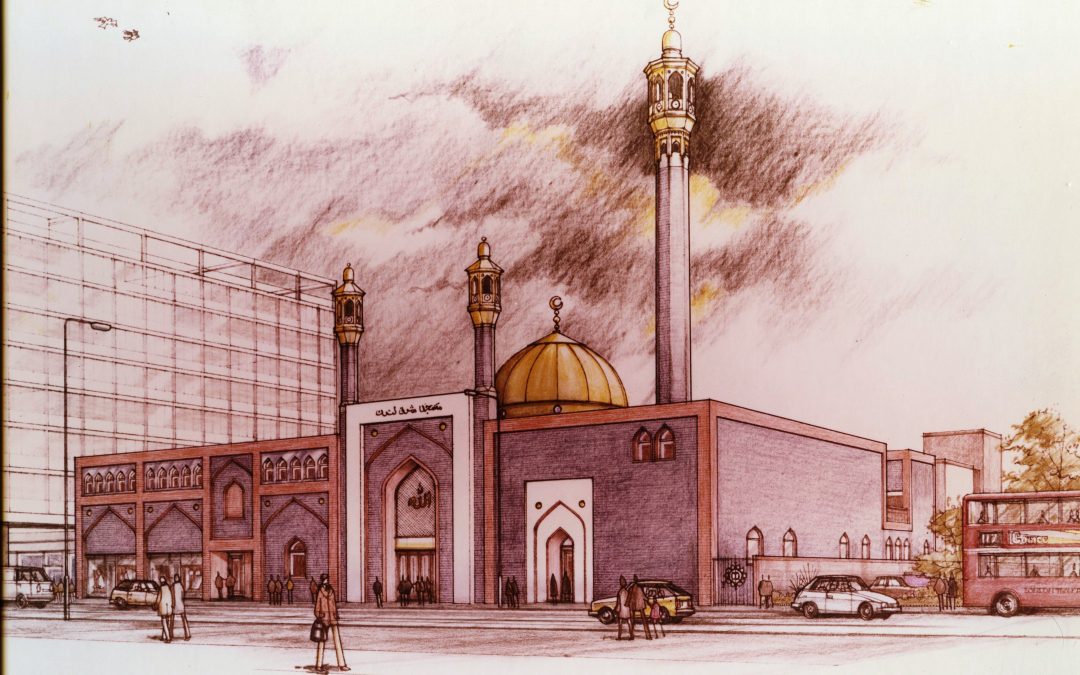
It’s a rare occasion for any Muslim organisation to be celebrating a 50-year anniversary in Britain let alone a 100th birthday. But the East London Mosque is celebrating its centenary year right now. A century since its birth, have we really asked ourselves: how long have Muslims been a part of British society?
The institution I work for is 100 years old. Not much for a Norman cathedral, or an Anglo-Saxon church. But for a British-built mosque, that’s quite something.
But we’re relative newcomers to these isles compared to some Muslims. A document dating as far back as the 16th century, suggests that “a sect of Mahomatens” had settled in London. The rise of the East India Trading Company, infamous for its part in the ‘Opium Wars’, brought the precious commodity of tea to Britain along with Muslim sailors from parts of Sylhet (in north-eastern Bangladesh) in the early 17th century. My own backyard, Brick Lane in the East End of London, came to mind when I discovered that: “There are records of Sylhetis working in London restaurants as early as 1873.” So with many migrants arriving thanks to commerce and trade with different parts of the British empire, and elsewhere in the world, it is only natural that many Muslims would work towards building a mosque, albeit in a foreign land far away from home.
The Right Honourable Syed Ameer Ali was one of those men who worked towards founding a mosque in the early 20th century. A Muslim jurist from India, Ali was an eminent figure whose lineage could be traced back to the Prophet Muhammad and had received Queen Victoria’s Order of the Indian Empire. He helped arrange the first meeting of what was to become the London Mosque Fund. A meeting at the Ritz Hoteltook place on the 9th of November 1910: an iconic date where prominent Muslims and non-Muslims met to establish, in Syed Ali’s own words: “A mosque in London worthy of the tradition of Islam and worthy of the capital of the British empire.”
The support from non-Muslims was key: Lord Nathan Rothschild, the first Jewish member of the House of Lords, and Educationalist, Sir Theodore Morison, were supporters from the outset. Even world renowned translators of the Holy Qur’an, Marmaduke Pickthall and Abdallah Yusuf Ali, pitched in during the early years of the London Mosque Fund.
A century later, could Syed Ameer Ali ever envisage that the fruits of his labour would amount to the East London Mosque (ELM) and its counterpart, the London Muslim Centre (LMC) next door? Somehow I think not. The site is soon to become the largest Islamic complex in Western Europe, with a second-phase of development called ‘The Maryam Centre’ on the way. Not only does it provide religious and spiritual services, but the education, social and economic welfare projects it supports try to emulate the ethos of the prophet Muhammad’s first mosque in Madinah which was established in 622 AD as a ‘hub’ for the whole community.
Achieving all this was not as easy as it might seem. The hard work of many notable Muslims and their non-Muslim backers went into realising the dream of the mosque and centre as they stand now.
History of the East London Mosque
The East London Mosque began with the purchase of three houses on Commercial Road, Stepney Green in 1940. Without significant patronage, the purchase might never have been made. Among the considerable donations was one of £1,000 (roughly equivalent to £70k today) from the Begum of Bhopal.
These homes were combined and eventually came to be known as the East London Mosque. Before that, the community had to make do with hiring rooms across the capital for 30 years in order to hold Friday prayers. Many communities up and down the UK still tread a similar path. The Saudi ambassador, Sheikh Hafiz Wahba, delivered the first Friday sermon or khutbah during the Mosque’s inauguration in 1941. The following Friday, the mosque hosted the Right Honourable Leo Amery, the Secretary of State for India. Other public figures still visit the mosque and centre to this day. The Prince of Wales visited the Mosque in November 2001 in order to launch the development work for the London Muslim Centre; the US Ambassador to the UK, Luis B. Susman, more recently visited in late 2010 and said:
“…there is a tremendous amount of interfaith work done by the Muslim, Jewish and Christian communities.”
The ELM and the Second World War
Around 2.5 million men from South Asia had volunteered for British Indian Army, making it the largest volunteer army of its kind. Muslims made up a quarter of its fighting force in 1947 and some later chose to settle and work in parts of the UK after the war.
The Second World War saw extensive destruction between 1940-41, with a sustained bombing campaign over 76 long nights by Hitler’s Luftwaffe. During ‘The Blitz’ the mosque suffered minor damage and an application was made to the War Damage Commission for assistance. At the first congregational Friday prayer for the ELM, Sh. Wahba stirred spirits with the following words in his native Arabic:
“In this critical time, when rivers of innocent blood are flowing with total disregard for human suffering, and when all the evil elements in the world have united to destroy every civilised and humanitarian activity, we gather here together to inaugurate this Mosque.”
Post-war immigration
The Muslim community in Britain grew with an influx of economic migrants in the late 1950s. Migrants from Pakistan and what is now Bangladesh came with the lure of earning over 30 times more than they would make in their respective home countries. Though some came for a short time, many settled in London and called it their home. Families and children were to follow in the 1970s. The demand for religious spaces grew and London’s first mosque could no longer cope. The East London Mosque, with its signature dome and minaret on Whitechapel Road, was completed in 1985 after a compulsory purchase order from the council, which exchanged the three houses in Commercial Road for a site in Fieldgate Street.
Almost 14 years passed since 1985 before the community rallied to build the London Muslim Centre. The construction, costing £10.5 million (77% of which was funded by the public) and began in 1999 when the entire community rallied in support for the London Muslim Centre. In June 2004, the Imam of Makkah, Sheikh Abdur Rahman as-Sudais was invited to lead prayers on the grand opening ceremony. Over 10,000 people crowded the streets of Whitechapel for the occasion.
Today, the East London Mosque and London Muslim Centre are both at the heart of a vibrant and flourishing community, Muslim and non-Muslim. It works with, and enjoys support from, many other faith groups and its members work to promote communal harmony. In recent riotsand demonstrations by the far-right English Defence League, it was volunteers and stewards from the mosque who prevented chaos and violence – for which they received police thanks.
We hope that in just some small way we can emulate our Prophet, peace be upon him, and the ideals he established in his mosque in Medina. On the day of our trust’s 101 birthday, our community and our supporters should be rightly proud for making this a truly wonderful place to work and for the remarkable achievements they, and other British Muslims, have made here over the past 100 years.


Recent Comments